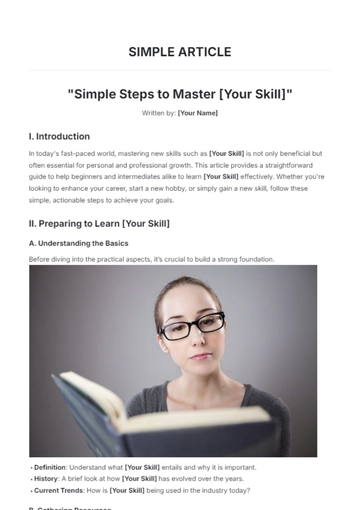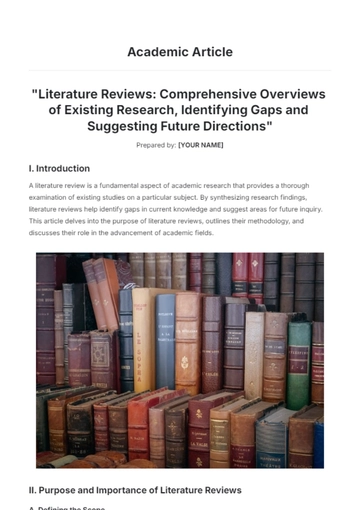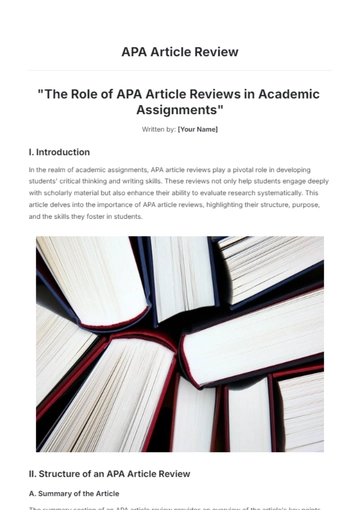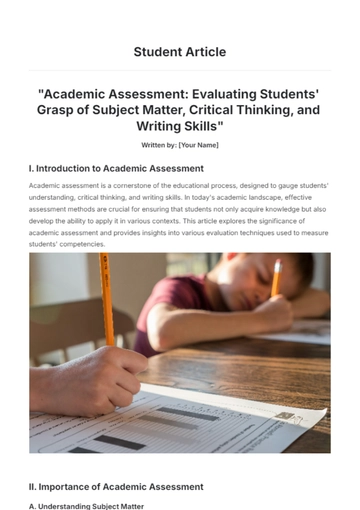Free Discussion Journal Article

Written By: [Your Name]
I. Introduction
In academic literature, the discussion journal article occupies a critical space, serving as a forum for in-depth analysis, critique, and debate surrounding research findings. This article aims to explore the structure and essence of discussion journal articles, highlighting their significance, common components, and best practices for effective writing.
II. Importance of Discussion Journal Articles
Discussion journal articles are integral to academic research for several key reasons:
Synthesis of Research Findings: These articles provide a comprehensive platform to synthesize and integrate various research findings. By bringing together disparate studies, they offer a holistic view of the current state of knowledge.
Identification of Gaps: By critically examining existing literature, discussion articles can identify gaps or under-explored areas, guiding future research directions and ensuring that scholarly work remains relevant and forward-looking.
Theoretical and Practical Advancements: Through detailed analysis and critique, these articles often contribute to theoretical developments and suggest practical applications. This advancement helps bridge the gap between theory and practice.
Fostering Scholarly Debate: Discussion articles encourage academic debate and dialogue, which can lead to new insights, perspectives, and innovations within a field.
III. Common Elements of a Discussion Journal Article
While the specific structure may vary, several key elements are typically present in discussion journal articles:
Introduction:
Purpose and Scope: Introduces the topic and the significance of the discussion, outlining the scope and objectives of the analysis.
Contextual Background: Provides necessary background information to frame the discussion within the broader context of the field.
Review of Literature:
Summary of Existing Research: Reviews relevant literature, summarizing key studies and findings.
Identification of Gaps: Highlights areas where current research is lacking or where contradictions exist, setting the stage for further discussion.
Analysis and Interpretation:
Detailed Examination: Analyzes the findings of relevant studies, discussing their methodologies, results, and implications.
Alternative Explanations: Considers alternative interpretations and explanations, providing a balanced view of the evidence.
Implications:
Theoretical Implications: Explores how the findings contribute to or challenge existing theories within the field.
Practical Applications: Discusses potential applications of the research findings and their impact on practice.
Conclusion:
Summary of Main Points: Recaps the key points of the discussion, reinforcing the article’s contributions to the field.
Future Research Directions: Propose areas for further investigation and potential research questions.
IV. Best Practices for Writing Discussion Journal Articles
To write a compelling discussion journal article, consider the following best practices:
Clarity and Precision:
Avoid Ambiguity: Use clear and straightforward language to ensure that your arguments are easily understood.
Define Terms: Clearly define any specialized terms or concepts used in the discussion.
Objectivity and Fairness:
Balanced Analysis: Present evidence objectively, giving fair consideration to different viewpoints and interpretations.
Avoid Bias: Ensure that your analysis is based on evidence rather than personal opinions or biases.
Incorporation of Diverse Perspectives:
Multiple Viewpoints: Engage with a range of perspectives to enrich the discussion and provide a comprehensive analysis.
Critical Engagement: Critically engage with opposing views to strengthen your arguments and provide a well-rounded discussion.
Accurate Referencing:
Cite Sources: Properly reference all sources used in your article to support your arguments and acknowledge the contributions of other researchers.
Follow Guidelines: Adhere to the specific referencing style required by the journal.
Relevance to Current Debates:
Contextual Relevance: Situate your discussion within ongoing debates and developments in the field to enhance the article’s significance.
Update Literature: Ensure that you incorporate the most recent research and trends to maintain the relevance of your discussion.
V. Conclusion
Discussion journal articles are vital to the progression of academic knowledge, offering a structured approach to critique and debate. By adhering to common elements and best practices, scholars can produce impactful articles that contribute to the advancement of their field. As academic research evolves, the role of discussion journal articles remains crucial in fostering rigorous inquiry and intellectual advancement.
- 100% Customizable, free editor
- Access 1 Million+ Templates, photo’s & graphics
- Download or share as a template
- Click and replace photos, graphics, text, backgrounds
- Resize, crop, AI write & more
- Access advanced editor
Engage in scholarly debate with Template.net's Discussion Journal Article Template. This editable and customizable template provides a clear structure for presenting your analysis and viewpoints in a discussion format. Editable in our AI Editor Tool, it helps you organize your thoughts, support your arguments, and meet academic journal publication standards.





























